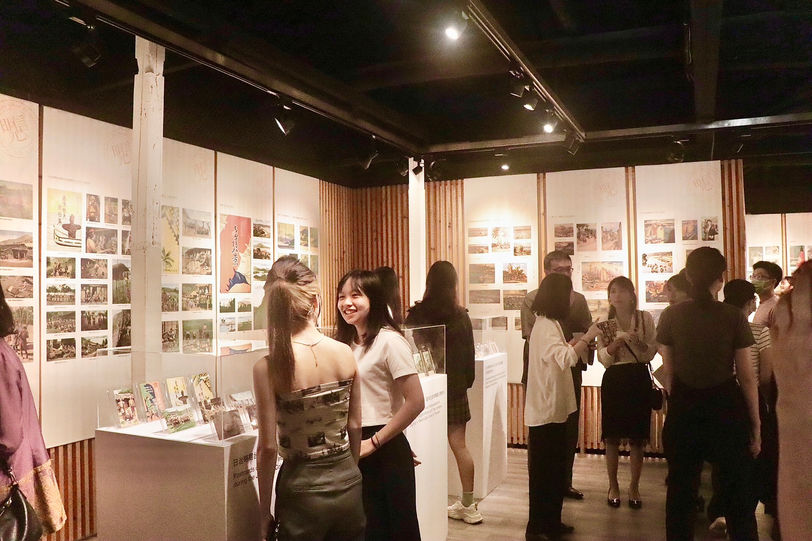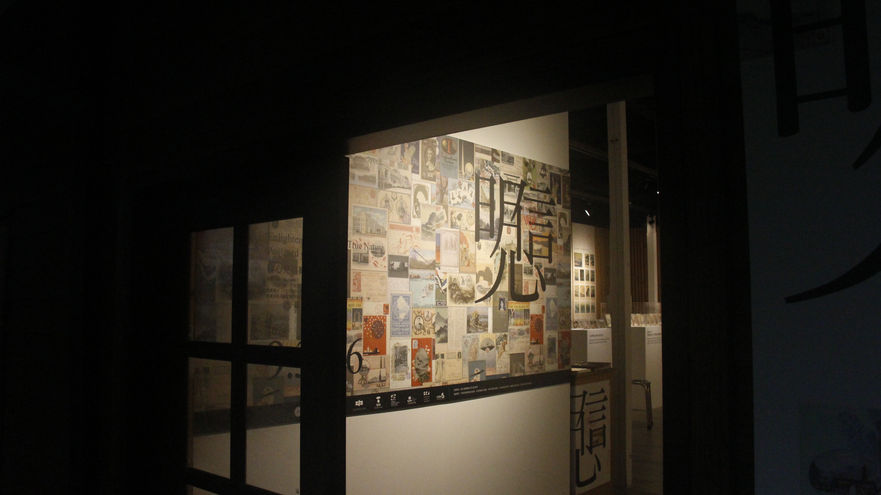2024
明心見信繪葉書展
明信片誕生於十九世紀歐洲,英文稱「Postcard」,日文稱「葉書」(空白明信片)、「繪葉書」(繪畫或攝影明信片),最早出現在1869年奧地利(奧匈帝國)。由於價廉、便利加上尺寸合宜,很快在歐美各國風行流通。1873年日本發行最早的「官製葉書」,1878年第二屆萬國郵政聯盟(Union Postale Universelle)大會協議國與國間可使用明信片郵寄,使得明信片更為風行,並且隨後傳到亞洲;1879年日本發行「國際郵便葉書」;1902年,萬國郵政聯盟25週年,日本加入並發行首套六張「繪葉書」。1905年,日治臺灣十週年,「臺灣總督府始政十年紀念繪葉書」由和田三造繪製,是台灣首次以繪畫加攝影形式發行的明信片。
「明心見信繪葉書展」規劃12個主題,分別為:
1.萬國郵政聯盟各國明信片
2.歷屆萬國博覽會明信片
3.威尼斯國際藝術展覽會(雙年展)明信片
4. 日治時期台灣原住民明信片
5. 和田三造繪製「臺灣總督府始政第十回紀念」台灣第一套明信片
6. 台灣近代美術啟蒙者:石川欽一郎、鹽月桃甫、鄉原古統、木下靜涯繪製明信片
7.日治時期矢崎千代二和石川寅治繪製台灣風景明信片
8.吉田初三郎「雙絕臺灣八景」+ 「臺灣全島鳥瞰圖」明信片
9. 台灣總督府歷年始政週年紀念明信片
10. 台灣總督府始政四十年臺灣博覽會紀念明信片
11.美女明信片
12. 台北高等學校增築+學生祭明信片
總計展出百餘張不同主題原版珍貴的明信片,得以從中一窺明信片設計形式隨著時間遞移的轉變,從簡單線條、花紋與說明文字的表現形式,到1880年代開始附加圖像的繪葉書誕生。
一片紙張可以簡化說明成物質材料,卻也可以是文化藝術寄身的軀殼,承載精神文明的載體。一張明信片上的主題、畫家、風格、印刷、郵票、郵戳,背後都承載當時的城市建設、地方風景、名勝古蹟、在地物產、社會風俗、原住民圖像等多元主題,甚至寄件人(收件人)帶出的名人效應,都為明信片產生更高的附加價值,而這些意象漸行漸遠或早已消逝,卻能藉由明信片重拾往昔的吉光片羽。
Postcards, born in Europe in the 19th century, are called “hagaki” or “ehagaki (pictorial postcards)” in Japanese. They first appeared in Austria (Austria-Hungary) in 1869. Their low price, convenience, and reasonable size quickly made them popular in the European and American countries. In 1873, Japan issued the earliest “official hagaki.” In 1878, the second Universal Postal Union (UPU) agreed that postcards could be mailed between countries, which made them even more popular and spread to Asia several years later. In 1879, Japan issued “international postcards.” In 1902, the 25th anniversary of the UPU, Japan joined the union and issued the first “ehagaki.” In 1905, the 10th anniversary of the Japanese occupation of Taiwan, the postcards of “the 10th Anniversary of the Founding of the Taiwan Governor-General’s Office” were designed by Wada Sanzo. They were the first postcards in the form of painting and photography issued in Taiwan.
“Enlightened Mind and True Nature: Postcards Exhibition” includes 12 subjects: postcards from the Countries of the UPU, postcards of the previous World’s Fair, postcards of the International Art Exhibition of the City of Venice, postcards of Taiwan's Indigenous People during the Japanese Colonial Period, Taiwan's first set of postcards, created by Wada Sanzo for “The 10th Anniversary of the Founding of the Taiwan Governor-General's Office,”postcards created by pioneers of modern Taiwan Art: Ishikawa Kinichiro, Shiotsuki Toho, Gohara Koto, and Kinoshita Seigai, Taiwanese landscape postcards created by Yazaki Chiyoji and Ishikawa Toraji during the Japanese colonial period, postcards of Yoshida Hatsusaburo’s “Taiwan’s Eight Views and Two Unique Sights”+ “Bird's-Eye View of Taiwan,” Various years of postcards commemorating “the Anniversary of the Establishment of the Taiwan Governor-General's Office,” postcards of “Taiwan Expo for the 40th Anniversary of the Founding of the Taiwan Governor-General’s Office,” postcards of Beauties, postcards of Taihoku High School’s Building Extension +school festival.
Through the display of more than hundred postcards of various subjects, we will have a glimpse of the transformation of postcard design with the passage of time, from simple lines, patterns, and descriptions to the birth of additional images in the 1880s.
A piece of paper can be not only simply taken as a material but also seen as a body of culture and art or a carrier of spiritual civilization. The subject, painter, style, printing, stamp, and postmark of a postcard embodies the diverse themes of the contemporary time such as urban construction, local scenery, historic sites, local specialties, social customs, and aboriginal images. Even the celebrity effect brought by the senders (recipients) creates the higher added value for the postcards. These images have faded away or disappeared, but they can be remembered through postcards.














